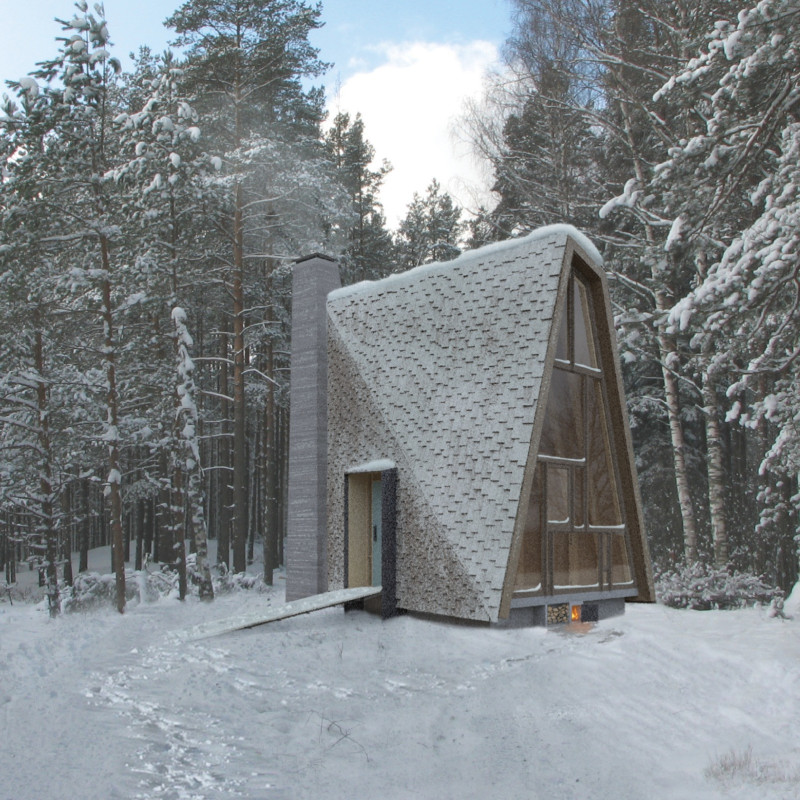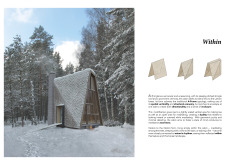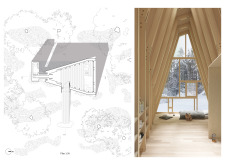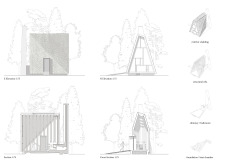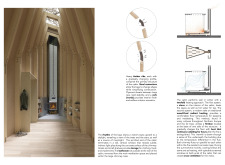5 key facts about this project
The cabin in the Latvian forest explores the connection between design and nature. With its steeply pitched shingle roof and a prominent chimney, it embodies a simple, familiar style that fits comfortably into the landscape. Designed as a retreat for meditation and reflection, it encourages visitors to engage with the natural world around them.
Structural Design
The design focuses on the relationship between verticality and enclosure. The building envelope forms a pinch on one side, creating a sense of direction and containment. Inside, this approach establishes distinct spaces—a cozy area for making tea and an open space for meditation. The separation of these functions enhances personal experiences and fosters a deeper connection to nature.
Material Composition
The cabin’s structure relies on heavy timber ribs that vary in profile, promoting both stability and visual interest. Steel connectors allow for flexibility in design, making construction easier while ensuring strength. Plywood sheets placed between the timber provide additional support, and cork overlay helps absorb sound, contributing to a peaceful atmosphere.
Spatial Experience
The arrangement of the bays draws the eye upward to a skylight, framing views of the trees and sky. A tall vertical window at the pinched end of the cabin allows natural light to enter, creating patterns of shadow on the walls. Practical features, such as hooks and shelves, are included to accommodate personal belongings, while placing the bathroom outside emphasizes the separation between the living area and functional spaces.
Thermal Strategy
The cabin utilizes a combination of an interior stove and a modern approach to wood-fired radiant heating. A firebox located at the base provides warmth to the floor, which stays warm long after the fire is out. In warmer months, windows at both ends of the cabin can provide cross ventilation, ensuring comfort throughout the changing seasons.
Light filters through the tall vertical window, filling the space with a soft glow and casting gentle shadows that enhance the meditative quality of the interior.


